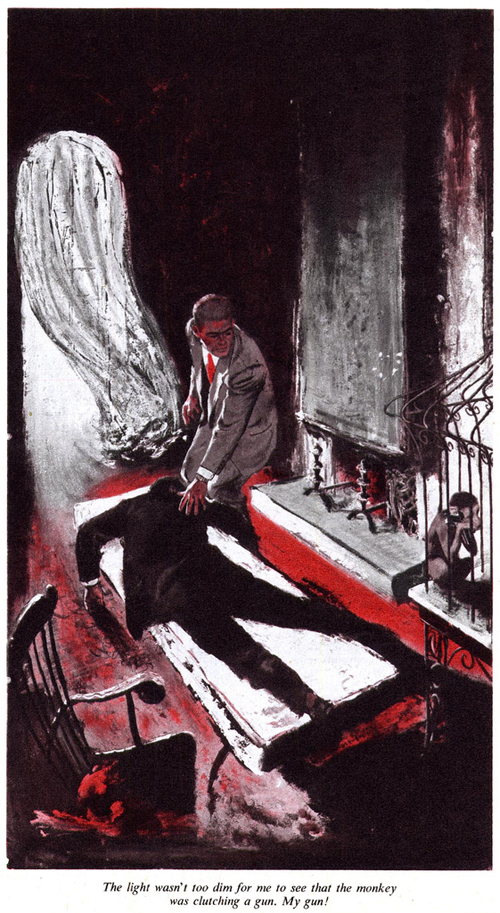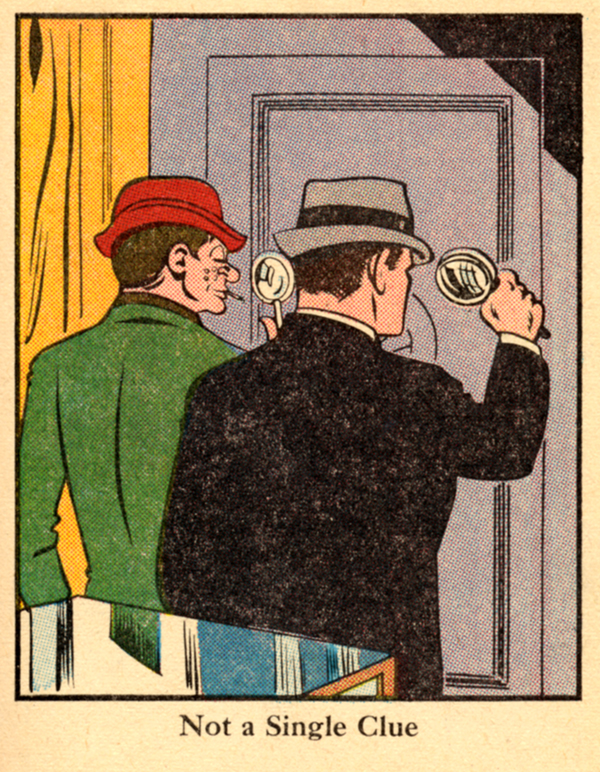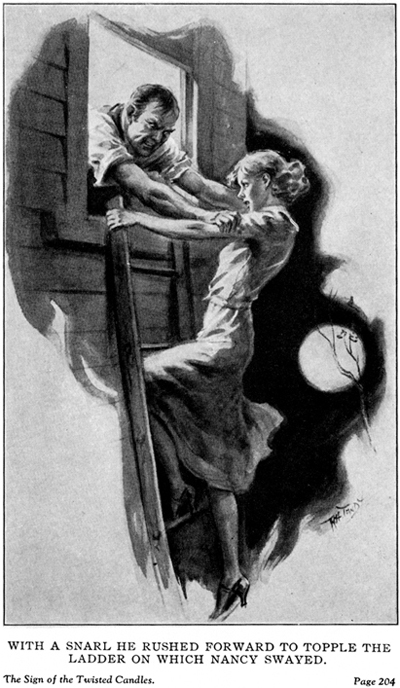Three Things: Sleuth Edition

I very much enjoy captioned illustrations. The kind that accompany (usually older) novels or stories, the caption an excerpt from a pivotal scene. When I find old books in shops, you can bet I’ll buy it if it has an exceptionally smashing illustration-caption combo, regardless of how promising the rest of the book appears.
I particularly enjoy these illustrations out of context. They are, of course, meant to supplement the larger work, but I prefer them as standalone stories: one brief (and usually action-packed) moment, enough to set the imagination running wild to construct the rest of the story.
There are way too many gems to pick from (read: you can bet this won’t be the last Three Things featuring captioned illustrations), so today let’s narrow the subject matter down to sleuths; specifically, sleuths originating in the 1930s, shall we? We’ll begin with an illustration from a Nero Wolfe story (and while you’re at it, check out the rest of this fantastic illustration collection on flickr), then move on to Dick Tracy (from a Big Little Book), and finish with one of my childhood heroes, Nancy Drew.

Thornton Utz, illustrator. Accompanying a Nero Wolfe story written by Rex Stout. The American Magazine, August 1951. Via leifpeng.

Chester Gould, creator. Newman, Paul S. Dick Tracy Encounters Facey. Racine, Wisconsin: Whitman Publishing Company, 1967.

Russell H. Tandy, illustrator. Keene, Carolyn. The Sign of the Twisted Candles. New York: Grosset & Dunlap, 1933. Via University of Maryland Libraries.
Comments are closed.






This post makes me wish I hadn’t sold my impressive collection of Hardy Boys books when I was 14.
I was never able to separate the illustration from the text as a whole, which might point to differences in our creative impulses. You look for a graphic element, where I am much more interested in the text. I always enjoyed the illustrations, but I liked the satisfaction of finding out how they fit into the story. Regardless, this is a fun post. I particularly like the caption on the Dick Tracy illustration.
Although I do adore (or abhor) illustrations in general from an art perspective, in terms of sparking my literary or storytelling interest, I really only have eyes for the captions; the illustrations paired with them are just the icing on the cake (and usually increase the hilarity I often find in them).
In fact, sometimes I’ve found the illustrations distracting from the larger story — as a kid I didn’t often like how they influenced the picture I already had in my head, so I would usually ignore them while reading.
I suppose that is maybe why I began to consider the captioned illustrations separate from the rest of the text… that and the fact that when you take them out of context, it either makes them much funnier, or they become a prompt for a story of your own (or both).
Here‘s a Hardy Boys illustration for you ; )